This summer we were able to attend the 2nd Annual Mass Timber Group Summit in the sunny mountain state of Colorado. The weather was not the only thing that was scorching—the topic of mass timber was just as hot.
The amount of knowledge and discussions floating in the air was everything you’d hope for in a couple of packed days of expedited learning. Cole Zuver from Prime Contracting said, “Stepping into the Mass Timber world is like drinking from a fire hose, and I am all here for it.”
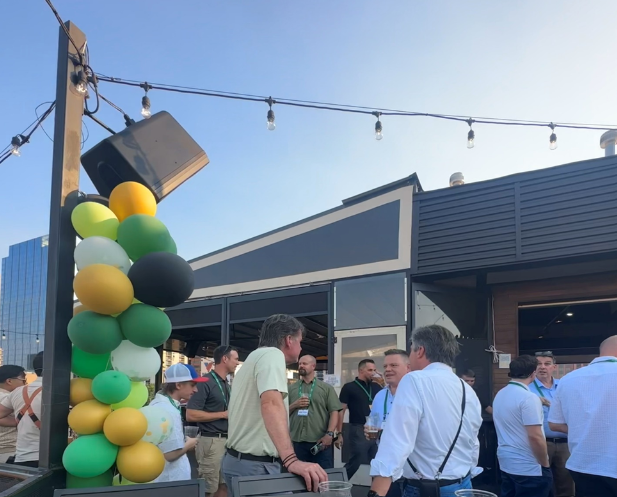
Nic Wilson and Brady Potts, along with their crew at Mass Timber Group, put on some fantastic networking parties. We started the event on the rooftop of a local hotspot, the ViewHouse Eatery Bar & Rooftop, set underneath the Coors Field stadium in Downtown Denver. The excitement and spirits were high with the days to follow. There’s a special comradery between partners in this industry and it is a great sight to see.
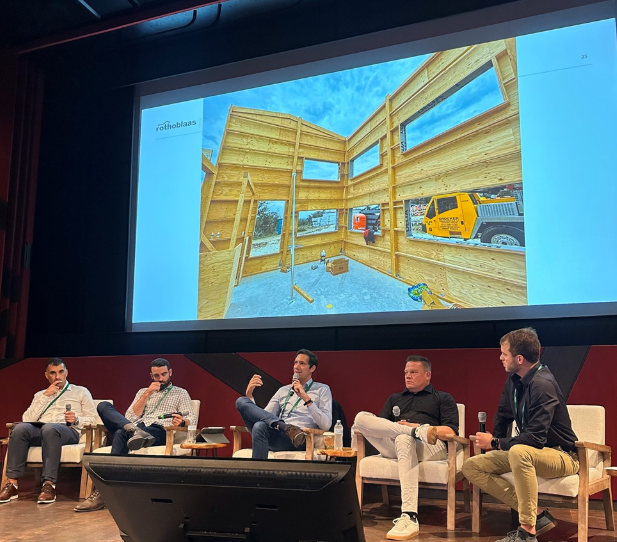
The warm morning had summit goers pouring into the Sharp Auditorium for five incredible keynote speakers: Tye Farrow of Farrow Partners; Steve Marshall, founder and president of Mass Timber Strategy; Taylor Cabot from Timberlab (shoutout to the PNW!); Dr. Greg Kingsley, president of KL&A Engineers and Builders; and CEO of Cornerstone Timberframes Tanya Bachmeier. That evening we also had the pleasure to hear from world renowned architect Shigeru Ban, who shared fascinating stories of humanitarianism and design.
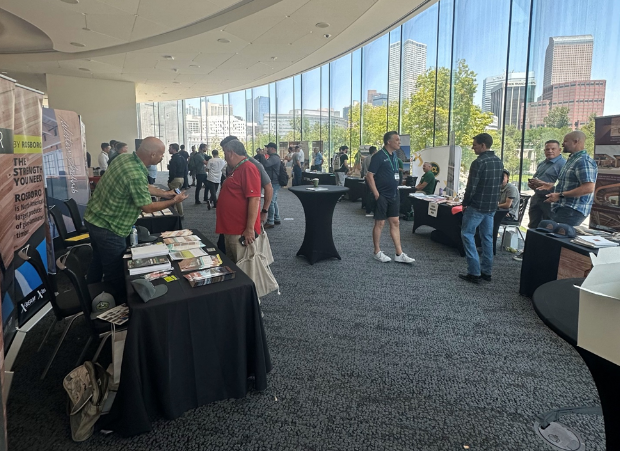
Intermissions and breaks gave attendees a chance to walk the exhibitor booths and connect with companies. We enjoyed having our project partner Lam-Wood Systems as a booth neighbor.
Breakout sessions were held in conference rooms scattered throughout the Denver Art Museum. They were filled with cohorts of attendees to hear and discuss with more than 30 topic experts. To name a few: Trent Debth with TimberBLDR, Ankit Sanghvi, Ty Kayton and Ryan Marshall with PCL Construction, Andre Lema with Western Archrib, Annie Perkins with Sustainable Forestry Initiative, Scott and Molly Cutler with Cutler Development, Russ Brotnov CEO at Carpentry Plus Inc, Michaela Harms at Sterling Structural, Lee Scott at Element5, Janelle Leafblad with Woodworks, Marcus Kauffman of Oregon Department of Forestry, Phil Mann with the Tallwood Design Institute, and so many more.

Our Vice President of Sales Tyler Freres spoke on a panel on Day 2 of the summit. He was able to share the story of our Mass Ply Panel (MPP) and its growing success in the ever-so-young U.S. mass timber industry. Tyler speaks from passion and truth of how much dedication and hard work went into inventing the world’s first veneer-based mass timber product. We have so many partners to thank, including Hannes Blaas from Rothoblaas for moderating this panel. We also want to thank so many others who are rooting for MPP. In particular, Greg Kinsley suggested that MPP is the finest material for large scale buildings, including warehouses and data centers.
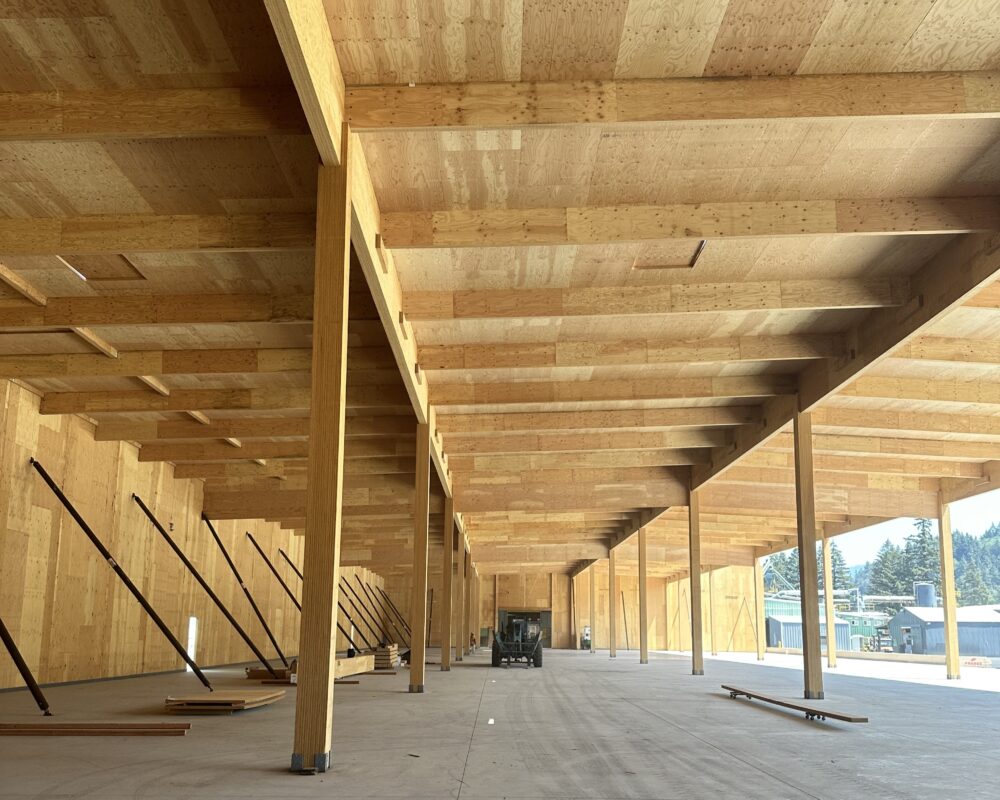
If there was one common ground among the 100+ event goers, it was that we are all here to see the success of mass timber. But what does the success of mass timber mean? A few thoughts were that the success would come from ‘mass’ production or ‘mass’ expansion. Where in our reality the ‘mass’ comes from, of course, the large sizes of panels. But above all else, the MASSIVE benefits this product brings to the table for construction and the world!
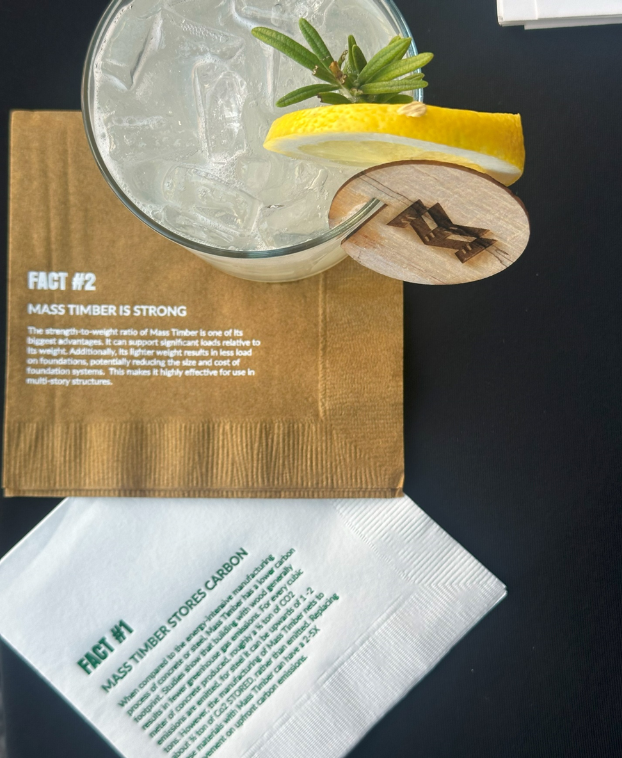
Future buildings with MPP are on the horizon—more and more testings are providing the true and outstanding capabilities of MPP. Here’s a short list highlighting the advantages of using MPP:
- Sustainability:
- Renewable Resource: Made from wood, which is a renewable material.
- Carbon Sequestration: Wood captures and stores carbon dioxide, reducing the overall carbon footprint.
- Strength and Durability:
- High Strength-to-Weight Ratio: MPPs are engineered to be strong yet lightweight, making them suitable for large spans and high-load applications.
- Durable: They have excellent performance characteristics, including resistance to deformation and high structural integrity.
- Construction Efficiency:
- Prefabrication: Panels are prefabricated, which can reduce construction time and labor costs.
- Ease of Installation: Their light weight and precision-cut dimensions simplify the installation process.
- Thermal Performance:
- Insulating Properties: Wood has natural insulating properties, helping to maintain consistent indoor temperatures and potentially reducing heating and cooling costs.
- Aesthetic Flexibility:
- Natural Appearance: The natural beauty of wood adds warmth and character to building interiors.
- Design Versatility: MPPs can be finished or treated to achieve various aesthetic effects.
- Fire Resistance:
- Fire Performance: When designed properly, MPPs can offer good fire resistance due to their mass and charring properties.
- Environmental Impact:
- Reduced Waste: The production of MPPs often generates less waste compared to traditional building materials.
- Lower Embodied Energy: The energy required to produce MPPs can be lower than that for other building materials like concrete or steel.
- Thermal Mass:
- Heat Regulation: MPPs can help regulate indoor temperatures by absorbing and slowly releasing heat.
- Design Innovation:
- Complex Shapes: MPPs can be manufactured into complex shapes and sizes, enabling innovative architectural designs.
- Adaptability:
- Versatility: Suitable for a wide range of applications, including residential, commercial, and industrial buildings.
- Cost-Effectiveness:
- Long-Term Value: While initial costs may vary, the durability, energy efficiency, and reduced maintenance needs can make MPPs a cost-effective option over time.
These benefits make MPP a compelling choice for modern construction, combining sustainability with high performance and design flexibility.
Subscribe
We’ll send you a notification when a new story has been posted. It’s the easiest way to stay in the know.